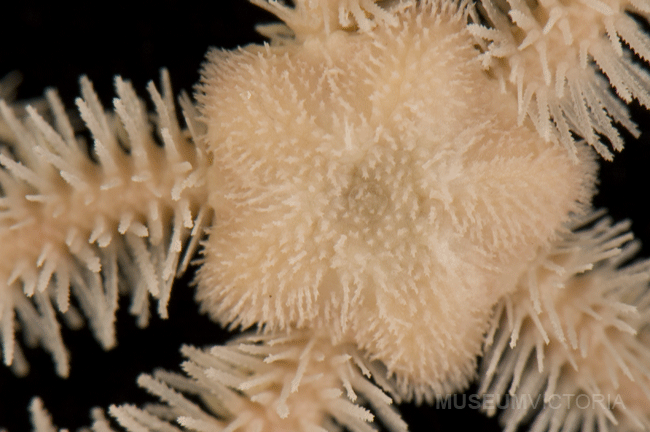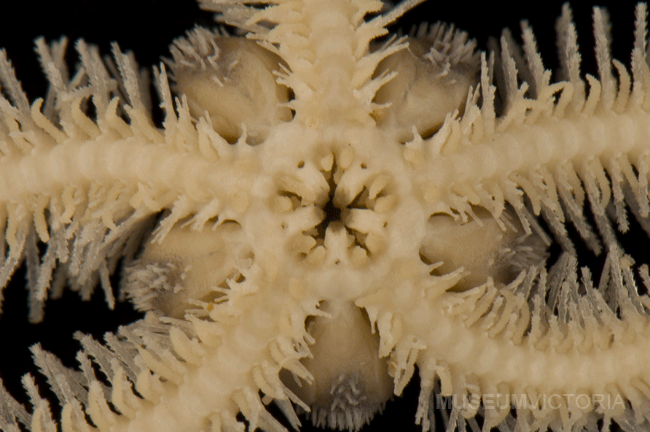Anatomy & Physiology
Body plan
Ophiuroids are mostly five-armed stars, with the arms distinctly set off from the central disc. The disc may be circular or pentagonal, as the case of Ophiothrix caespitosa (figure 1).
 Figure 1: Pentagonal disc and arms insertion
Figure 1: Pentagonal disc and arms insertion
Its epidermis have no cilia, except in localized areas. The dermis produces and contains the skeletal ossicles, but they have no pedicellariae. These ossicles may be in the form of plates, called shields.
The arms are composed by a series of articles, and each of them is formed by 4 shields (2 laterals, 1 aboral ans 1 oral shield). The lateral shields usually have arm spines. The amount, size and shape of those spines vary for each species.
The oral surface of the disc is composed by oral shields forming 5 interradial jaws, framing the mouth (figure 2). One of the shields may be modified to form the madrporite.
 Figure 2: Oral shields
Figure 2: Oral shields
Nervous system
It is composed of a circumoral nerve ring and radial nerves. The lack specialized sense organs, and individual sensory cells compose the sensory system.
Most ophiuroids are negatively phototaxic and are able to find food without contact.
Digestive system
The ophiuroid gut is a blind sac restricted to the disc. The mouth is in the centre of the disc, in the oral surface. A thick and short esophagus joins the mouth with a large saclike stomach. Intestines and anus are absent.
Ophiuroids may be carnivores, scavengers, deposit feeder or suspension feeders.
(Ruppert, Fox & Barnes, 2014)
|